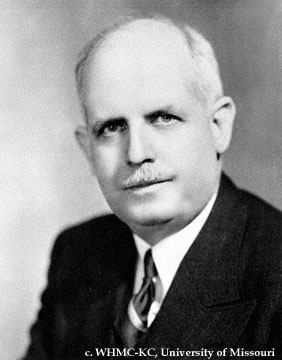Herbert S. Hare (1888-1960)

Biography
Herbert S. Hare was born in Kansas City, Missouri, where his father was a well-known self-taught landscape architect with a consulting business. From 1908-1910, Hare studied at Harvard University’s School of Architecture under Frederick Law Olmstead, Jr. When he returned to Kansas City in 1910, he joined his father’s firm. As influenced by the Garden Cities movement, Hare & Hare believed that ‘the modern suburban addition must be a resident park…where landscape, art and nature are combined.'(1) In addition to working for the USHC during WWI, Hare also worked on military housing during WWII. Hare was a frequent lecturer and writer and was a fellow of the American Institute of Park Executives and the American Society of Landscape Architects and served as a director of the American Institute of Planners.
Sample Projects
Mission Hills and Country Club District neighborhoods, Kansas City
Plan for the town of
Longview, Washington
Plans for Houston, Fort Worth, and Dallas, Texas
Point Defiance Park in Tacoma, Washington
Dealey Plaza, Dallas, Texas
Jackson County Courthouse, City Hall and the Municipal Courts complex, the Nelson-Atkins Museum of Art, several parks and cemeteries
Villa Philbrook in Tulsa, OK (now the Philbook Museum of Art)
Oklahoma City's City Beautiful plan (1928)
Numerous state parks throughout Missouri
Campuses for the University of Houston, University of Kansas Medical School, University of Texas at Austin and numerous other campus plans
Major Publications
The relation of the landscape architect to the state park movement
Elements of a good state park plan
Relation of cemetery and park design
Use of water in landscape design
Sources/Further Information
(1) History of the Landscape Architecture Firm of Hare and Hare by
Cydney Millstein, 2009
(available online through the Western Historical Manuscript Collection-Kansas City)
(2) Sid J. and S. Herbert Hare by Daniel Colman, 2008 (available online through the Missouri Valley Special Collections of the Kansas City Public Library)
![]()
